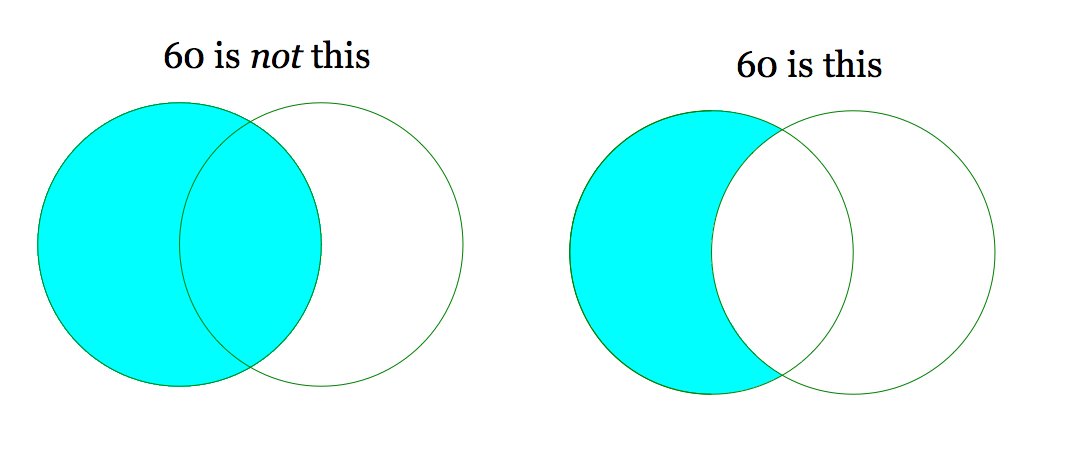BR
I'm at home right now, and I don't have the
OG with me, but according to your first post, the original text was:
A marketing firm determined that, of 200 households surveyed, 80 used neither Brand A nor Brand B soap, 60 used only Brand A soap, and for every household that used both brands of soap, 3 used only Brand B soap. How many of the 200 households surveyed used both brands of soap?Again, the crucial part is the wording. The 60 does not represent everyone who uses Brand A; it represents the folks who use "
only Brand A." By definition, that excludes and does not count the people who use both Brand A and Brand B.
The question would be very very different if they said: "60 people use Brand A." That would imply that 60 is the number of
everyone who uses Brand A, both the folks who use
only Brand A and the folks who use
both Brand A and Brand B. Often, on the GMAT, these set questions are set up that way, and when they give a number, it's a number that includes the "only" people and the "both" people.
Here, because of the precise wording, we know it's a different kind of question -- the 60 is "only Brand A", and include no overlap, no part of the "both" people.
Similarly, the 3x that we use for Brand B is technically for the folks who use "only Brand B" --- again, that contains no overlap and does not include any of the folks who use "both".
With the GMAT, you can rely on the wording to give you all the precision you need. I don't have the
OG with me, so I can't see the diagram to which you are referring, but based on the wording of the question, I am going to say about that diagram:
= The 60 refers
not to the whole circle but to the "lune" --- or whatever you want to call the piece of the circle left when you subtract the overlap. I attached a rough diagram to demonstrate this visually -- 60 is not the circle, but rather the lune.
= Similarly, the 3x refers not to the other circle, but again, to the "lune" on that side.
= x is the overlap, the part included in neither "lune"
Therefore, when you add 60 + x + 3x, there's absolute no overlap to be subtracted, because those are three mutually exclusive and non-overlapping conditions.
We know they are mutually exclusive and non-overlapping because the question text was precise in specifying "
only Brand A" and "
only Brand B."
Does this clear things up? Please let me know if you have any further questions.
Mike

Attachments

the Venn lune.jpg [ 134.52 KiB | Viewed 6933 times ]



 25%
(medium)
25%
(medium)
 39%
(00:45)
wrong
39%
(00:45)
wrong  based on 204
sessions
based on 204
sessions

